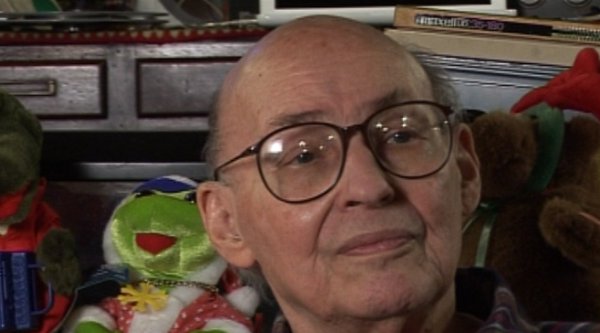NEXT STORY

My friendship with BF Skinner
RELATED STORIES

NEXT STORY

My friendship with BF Skinner
RELATED STORIES


|
Views | Duration | |
|---|---|---|---|
| 131. The work of BF Skinner | 1210 | 02:22 | |
| 132. My friendship with BF Skinner | 1151 | 02:58 | |
| 133. The cleverest rat | 5 | 1071 | 03:10 |
| 134. Activating a dead crayfish claw | 972 | 04:20 | |
| 135. My endless sequence of lucky breaks | 1006 | 00:40 | |
| 136. Building my randomly wired neural network machine | 1847 | 02:25 | |
| 137. Show and tell: My neural network machine | 1 | 1812 | 03:21 |
| 138. Learning machine theories after SNARC | 1132 | 02:09 | |
| 139. My mistake when inventing the confocal microscope | 1243 | 01:11 | |
| 140. Nicholas Negroponte's lab: The Architecture Machine | 1030 | 02:00 |


I started to read about theories of learning and the prominent scientist of the greatest reputation was Burrhus F Skinner, Burrhus Fred Skinner – we all called him Fred – who had written a book in the… I don't know, 1930s or '40s about how animals could be trained to learn by giving punishment and reward and… particularly extinction, which is just not rewarding them. Which is more… if you punish an animal for making a response you don’t like, that will quickly make the response disappear, but shortly after you go away it'll… it'll start trying it again and... it turns out that if you extinguish a response you don’t like by punishing an animal, then when you disappear, the animal may act as though he’s learnt to do it even more in the meantime. It’s a phenomenon that Skinner discovered. Maybe it hadn’t been known. So, the way to permanently extinguish a reaction... it’s better simply to ignore it when the animal does it and not give it a reward. Anyway, he discovered a large number of things like that. And of course, earlier scientists like Watson in… in America and Pavlov in Russia had discovered many things like that in… around the turn of the century, 1900. And lots of people had followed Pavlov and done experiments with dogs and rats and things and pigeons, but Skinner was the first person to move this from a sort of anecdotal science to a very systematic science. And so, he had done lots of research with rats and pigeons where they’re in a box, which is completely isolated from the world with no sound and no light except for the stimuli he wanted. And so, he’s doing scientific experiments with very good controls whereas we have a movie of Pavlov training dogs. And it’s just in a big laboratory and there are lots of other dogs in cages around and… it’s not so systematic.
Marvin Minsky (1927-2016) was one of the pioneers of the field of Artificial Intelligence, founding the MIT AI lab in 1970. He also made many contributions to the fields of mathematics, cognitive psychology, robotics, optics and computational linguistics. Since the 1950s, he had been attempting to define and explain human cognition, the ideas of which can be found in his two books, The Emotion Machine and The Society of Mind. His many inventions include the first confocal scanning microscope, the first neural network simulator (SNARC) and the first LOGO 'turtle'.
Title: The work of BF Skinner
Listeners: Christopher Sykes
Christopher Sykes is a London-based television producer and director who has made a number of documentary films for BBC TV, Channel 4 and PBS.
Tags: The Behavior of Organisms, BF Skinner, Ivan Pavlov, John B Watson
Duration: 2 minutes, 23 seconds
Date story recorded: 29-31 Jan 2011
Date story went live: 13 May 2011